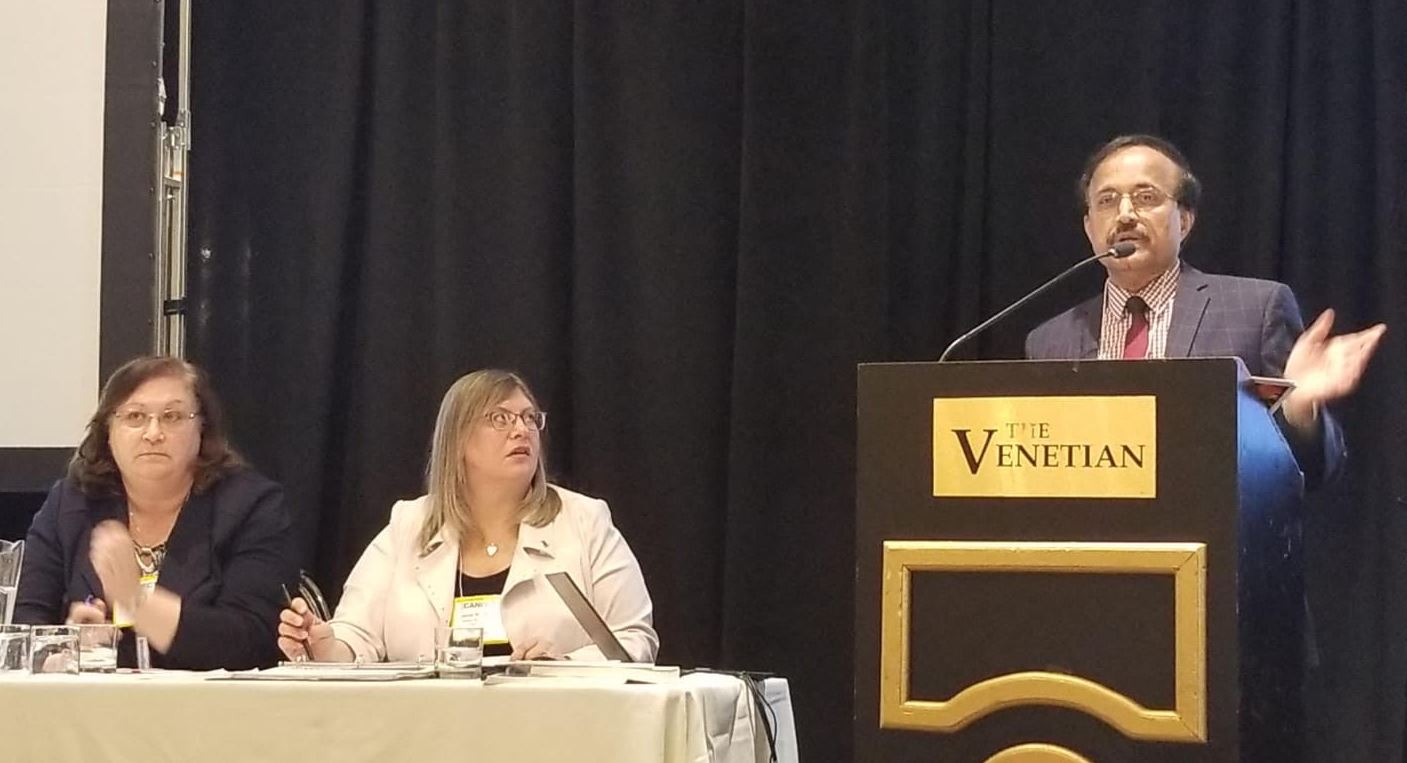

Sat Anand of Anco Chemicals made a presentation called “E2 Planning” at the CANECT Conference. E2 planning has 4 steps: prevention, preparedness, response and recovery.
Prevention involves: identifying in advance the risks, studying past emergencies, predicting scenarios, containing spills, operating procedures, preventive maintenance, facility design, operator competence, leak detection/alarms, incident investigation and compliance to standards. Prevention is essential for reducing the frequency and severity of E2 through preventive action, corrective action and risks managed. Prevention success stories should be prepared. A risk management program should be implemented in advance including process design and operation, training and smooth facility operation. RMP is far less expensive than dealing with the human health problems and environmental damage.
A risk management program includes: hazard identification, risk analysis, reduction of risk and response plans. Preparedness means involving first responders and nearby stakeholders, communicating risk and controls to surrounding facilities, communities and the public. Providing adequate resources to responders including mutual aid agreements, maintaining equipment, testing the plan and informing the public. Preparedness success stories should be prepared.
Quick and effective response relies on sound planning, pre-established partnerships and regular testing. Effective response includes quick activation of the plan, adequate resource mobilization, rapid assessment of the emergency, notification to first responders and alerting public, evacuation, accounting for personnel and adequate reporting. Partners include: other industries, communities, local organizations and government.
Recovery means restoration of environmental damage during the emergency. The best method is to discuss among all involved parties, to assess the damage and agree on a restoration plan. The objective of recovery is to provide sufficient direction to minimize recovery time and reduce impacts. The longer the recovery takes, the higher the ultimate cost.
 Sharon Walker of Vaughan Emergency Planning made a presentation at the CANECT conference on Planning E2 Exercises. The first step is to contact municipality for assistance and participation in exercise. Business must decide when to hold an exercise, weather considerations, time of day and implications to neighbouring industries/businesses. They must choose the types of exercise (notification, case study, table top, simulation cell and field exercise). When planning the exercise you do need to: know your goals and objectives; what you plan to achieve; what are you exercising (part of the plan or the whole plan); and is the training and practice for staff or the evaluation of relevance and effectiveness of the plan. She suggested to create a 5 year schedule to work up to the field exercise. The Exercise Planning Objectives should be simple, measurable, achievable, realistic and time specific. To develop your exercise: create a scenario, determine the scale or size of the incident, the internal and external participants and establish a planning team.
Sharon Walker of Vaughan Emergency Planning made a presentation at the CANECT conference on Planning E2 Exercises. The first step is to contact municipality for assistance and participation in exercise. Business must decide when to hold an exercise, weather considerations, time of day and implications to neighbouring industries/businesses. They must choose the types of exercise (notification, case study, table top, simulation cell and field exercise). When planning the exercise you do need to: know your goals and objectives; what you plan to achieve; what are you exercising (part of the plan or the whole plan); and is the training and practice for staff or the evaluation of relevance and effectiveness of the plan. She suggested to create a 5 year schedule to work up to the field exercise. The Exercise Planning Objectives should be simple, measurable, achievable, realistic and time specific. To develop your exercise: create a scenario, determine the scale or size of the incident, the internal and external participants and establish a planning team.
When Creating a Scenario she said to keep it real, based on risk assessment, painting a picture with words and avoid creating an Armageddon. She suggested using safety videos from the Chemical Safety Board http://www.csb.gov/videos/
Pre-Exercise Training includes building mini scenarios, creating hands on training activities and a walk-about. When conducting the exercise you should stay on schedule, control access to the site, ensure necessary resources are available, use props to simulate the incident, clearly identify Evaluator and Observers. Remember that Developers and Controllers do not actively participate and be prepared for real incidents during the exercise.
The Evaluation includes debriefing all participants. Evaluations should be confidential. Questions include: What went well? What could be done better? What do we need? What did you learn? After the evaluation an Action Report containing action items should put together.
